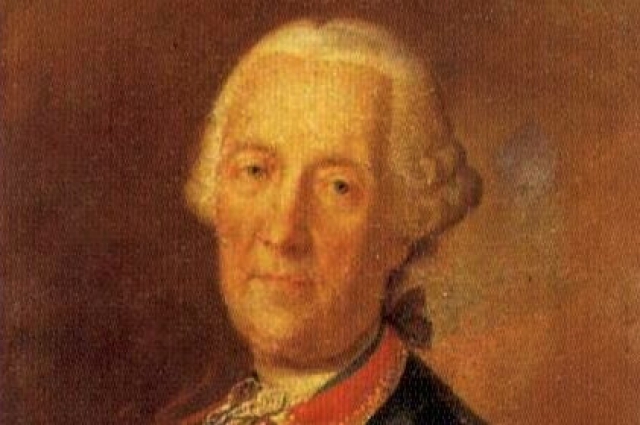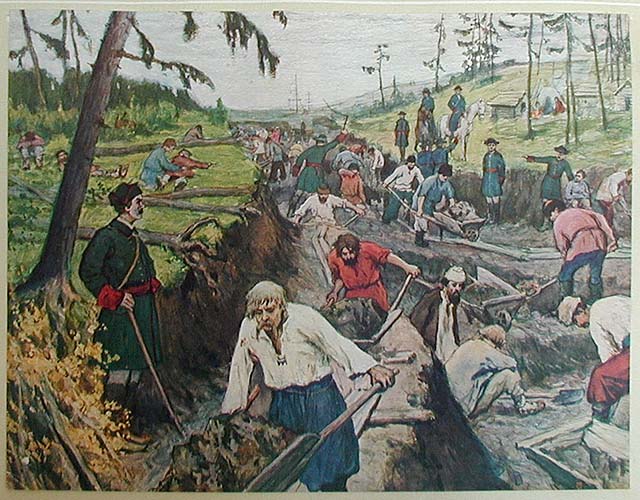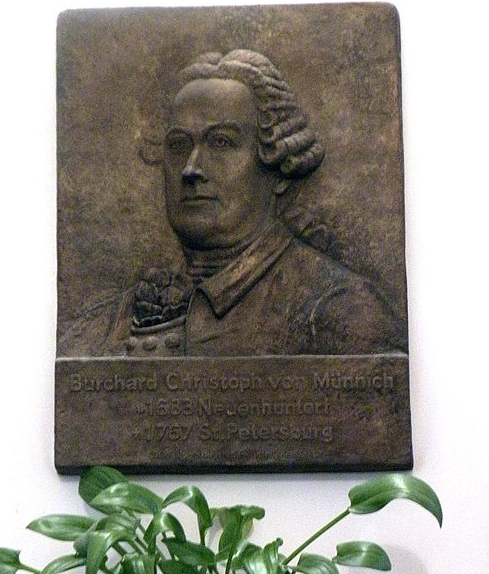След Нации Category: GermanyСлед Нации Tags: ue, Germany, губернатор, Пётр I, and Christopher Minich
Third Governor of St. Petersburg. Interesting facts of Christopher Minich`s life
On this day, 247 years ago, one of the first governors of St. Petersburg, Christopher Minich, died. He connected his life with Russia already at the venerable age by the standards of the 18th century – at 38 years old. However, rather quickly he won the trust and respect of Peter I and took the place of his protege in the capital of the Russian Empire.
During the years of Minich’s reign, the Ladoga Canal was built in St. Petersburg, water communication with Europe was established and the Russian army was partially reformed. SPB.AIF.RU invites you to recall the main milestones in the life and career of Christopher Minich on Russian soil.
Engineer from OldenburgCount Burdhard Christoph von Munnich was born in 1683 in the German principality of Oldenburg into a family of hereditary engineers engaged in water communications. Fate was favorable to him, and he, unlike, say, Mikhail Lomonosov, achieved success not despite the circumstances, but rather skillfully using them. In his youth, Munnich received a good education, comprehended the wisdom of engineering and drafting, mastered Latin and French. Then there was a period of military career – from 1700 he gave 20 years to the army, served as an engineer in the French, Hesse-Darmstadt, Hesse-Kassel and Polish-Saxon armies, rose to the rank of colonel and was in French captivity.
Returning to Germany, he nevertheless decided to follow in his father’s footsteps and began building a lock and a canal in Hesse-Kassel. The engineering path led him to Russia – in 1721 he sent his treatise on fortification to Peter I, and soon the Russian ambassador to Warsaw, Grigory Dolgorukov, invited a gifted German to help in the implementation of the projects of the Russian emperor.
Christopher Munnich in the portrait by Heinrich Buchholz. Photo:Commons.wikimedia.org Having adopted the name of Christopher Antonovich Minich for simplicity, Christoph Munnich quickly found a common language with the pragmatic king. Under the contract, he undertook to supervise the work on the Baltic coast for 6 years as a general engineer. The first project was the fortification of Kronstadt. “Thanks to Dolgorukov, he brought me a skilled engineer and general. I found a person who will graduate for me from the Ladoga Canal. Even in my service, I have never had such a foreigner who knew how to carry out great plans like Minich! ”- said Peter I in the Senate.
Ladoga Canal as a career springboard
The construction of the Ladoga Canal was one of the last major engineering projects during the life of Peter I. Minich was promoted to lieutenant general, then to general-in-chief and was awarded the Order of St. Alexander Nevsky. The talented hydraulic engineer Minich dissuaded Peter from arranging “water extravaganzas” in Strelna and convinced the emperor that Peterhof would be the most suitable place for the cascades.

Breaking through the Ladoga channel. Alexander Moravov, early XX century. Photo:Commons.wikimedia.org After the death of Peter, a period of timelessness began in the imperial capital – in a few years Petersburg became empty, officials and representatives of other estates dispersed in all directions. In 1727, Emperor Peter II, who moved with his court to Moscow, appointed Minich Governor-General of St. Petersburg, Ingermanland, Karelia and Finland.
At this time, the leadership potential of the German official was fully revealed: under him, regular sea communication between St. Petersburg and Europe began, the construction of the building of 12 colleges was completed, stone bastions of the Peter and Paul Fortress and the Baltic port were built.
Thanks to the engineering genius of Minich, mail and passenger packet boats began to run from Kronstadt to Lubeck and Danzig.Military merit
With the ascension to the throne of Anna Ioannovna, Minich’s talent again became in demand – he was appointed president of the Military Collegium and General Field Marshal, and in 1732 he received the rank of Field Marshal.
At this time, the governor of St. Petersburg developed a new procedure for maintaining the guards, field and garrison regiments, created two new regiments: Izmailovsky and Horse Guards, carried out a reform of the uniforms of troops, arranged twenty regiments of the Ukrainian militia from noblemen-one-courtiers of the former Belgorod and Sevsky categories. He also established the first nobility cadet corps in Russia, “in order to educate and teach in it from four to five hundred young nobles and officers’ children both physical and military exercises, and foreign languages, arts and sciences.” Minich took care of the Gentry Corps for many years, being its chief in 1732-1741.
In 1734, Minich’s powers as governor of Petersburg ended, and in the same year he commanded troops in Poland and took Danzig. Later, Field Marshal Minich commanded the Russian army in the war with the Ottoman Empire. For four years, he planned to occupy the Northern Black Sea region, Crimea, Moldavia, Wallachia and in 1739 enter Constantinople. It was not possible to put this plan into practice, but in the summer of 1739, Minikh resumed the offensive and defeated the Turkish troops in the battle of Stavuchany near Khotin, thereby achieving the occupation of most of Moldova. Only the Belgrade Peace stopped the military impulses of the field marshal.Head of Siberia
In 1741, during the accession to the throne of Elizabeth Petrovna, Minich was accused of high treason, bribery and embezzlement (on false denunciations).

Memorial plaque to Christopher Munnich in Petrikirch. Фото: Commons.wikimedia.org / Витольд Муратов He was sentenced to death, but already on the scaffold the punishment was replaced by exile to Siberia. In the distant village of Pelym, Christopher Minich spent 20 years.
Historical evidence suggests that even in exile he did not lose courage: he went in for sports, grew vegetables, taught children and made various engineering inventions.
20 years later, in 1762, the new emperor Peter III returned 78-year-old Minich to St. Petersburg, returning him all ranks and awards. After the coup, Minich was forgiven by Catherine and took the oath to her. “Not being a son of Russia, he was one of her fathers,” said Catherine II of him.
In recent years, he was appointed, as requested while in exile, the governor of Siberia. He controlled it, however, remotely – from St. Petersburg.
Field Marshal Count Minich died in 1767. Initially, he was buried in Petrikirche on Nevsky Prospekt, but later the ashes were transferred to the count’s estate Lunia (Luunya) near Dorpat.Источник: https://spb.aif.ru/society/people/1369580No Records Found
Sorry, no records were found. Please adjust your search criteria and try again.
Google Map Not Loaded
Sorry, unable to load Google Maps API.





